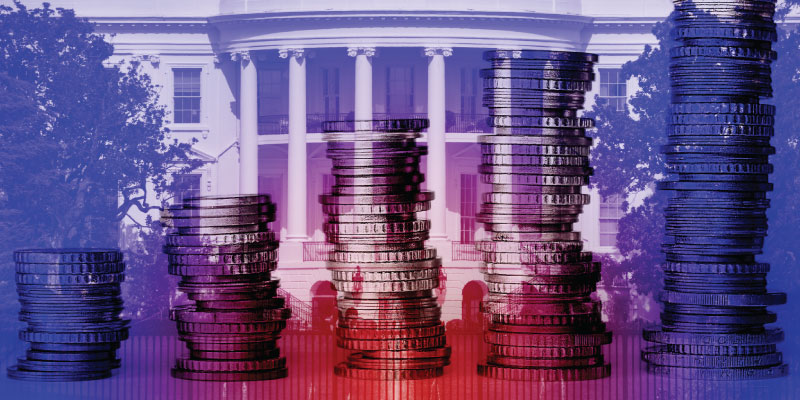3D Investing: 2025 Mid-Year Economic and Market Outlook

As Americans celebrated Independence Day, Congress passed President Trump’s sweeping “The One, Big, Beautiful” bill, and the U.S. simultaneously executed a successful strike on Iran’s nuclear infrastructure. Equity markets have responded with exuberance, rallying sharply on renewed optimism.
This surge follows a volatile first half of 2025, marked by the shock emergence of DeepSeek AI and heightened policy unpredictability. Despite these challenges, the U.S. economy has demonstrated resilience. However, we expect a phase of slower growth, persistent inflation, and delayed interest rate cuts in the months ahead. In this environment, we maintain a cautious stance and favor some defensive positioning. (Link to our full outlook)
In addition to our continued focus on artificial intelligence, we’re monitoring three rising macro themes we believe will shape the investment landscape: Defense, U.S. Dollar Depreciation, and Deglobalization.
Defense Spending Accelerates
At the June NATO summit, member nations agreed to President Trump’s proposal to double defense spending targets—from 2% to 5% of GDP by 20351 —amid growing security concerns in Eastern Europe. This commitment not only reinforces NATO’s collective military posture but also signals a thaw in transatlantic trade relations, as much of the increased budget is expected to be channeled toward U.S.-made defense systems.
From an investment perspective, this shift favors public defense contractors involved in advanced weaponry, aerospace, military electronics, and logistics, along with adjacent sectors like cybersecurity and space technology. Investors seeking diversified exposure can consider defense-focused ETFs. On the private side, we see compelling opportunities in venture and private equity targeting emerging defense tech and aerospace innovation.
Dollar Weakness Persists
The U.S. dollar has fallen over 10% year-to-date—its worst first-half performance since 1973. Protectionist trade policies and an increasingly isolationist foreign agenda have undermined global investor confidence2. With the “One Big Beautiful Bill” poised to expand fiscal spending significantly, rising debt levels are intensifying concerns about long-term sustainability. As a result, pressure on the dollar is likely to persist.
Beneficiaries of dollar depreciation include international equities and fixed income, cryptocurrencies, commodities, and precious metals—all becoming more attractive when the USD weakens. Domestically, U.S. exporters and multinational firms in sectors such as insurance, financial services, consulting, and IP-based businesses are well-positioned to benefit from improved competitiveness and favorable currency translation3.
The Rise of Deglobalization
The global economic pendulum is swinging toward fragmentation. Policy priorities are shifting from efficiency to sovereignty, resilience, and national security. The retreat from globalization, already in motion with Brexit and “America First” policies, has accelerated, particularly in strategic sectors like semiconductors, pharmaceuticals, rare earth minerals, and advanced electronics.
This trend is catalyzing a reconfiguration of global supply chains through onshoring, nearshoring, and friendshoring. As companies prioritize redundancy and stability over cost, we anticipate increased capital flows into regional manufacturing and logistics. Rising labor costs and energy insecurity are also fueling demand for automation, robotics, and renewable energy technologies. Tangible assets such as real estate, infrastructure, and farmland are poised to gain from the localization of production and distribution.
Thematic investors can identify emerging trends early, positioning portfolios to capture growth opportunities. This flexible approach allows for adjustments as themes and market dynamics evolve. However, thematic investing should complement a diversified portfolio, supported by thorough research and aligned with individual objectives, time horizons, and risk tolerance.
1CNBC: NATO allies agree to higher 5% defense spending target, 6/25/2025
2Financial Times: US Dollar suffers worst start of the year since 1973, 6/30/2025
3NPR: Why is the dollar off to a weak start this year? Interview with Harvard University economics professor Kenneth Rogoff, 7/4/2025
Begin your journey
Have questions?
Speak with an financial expert.







